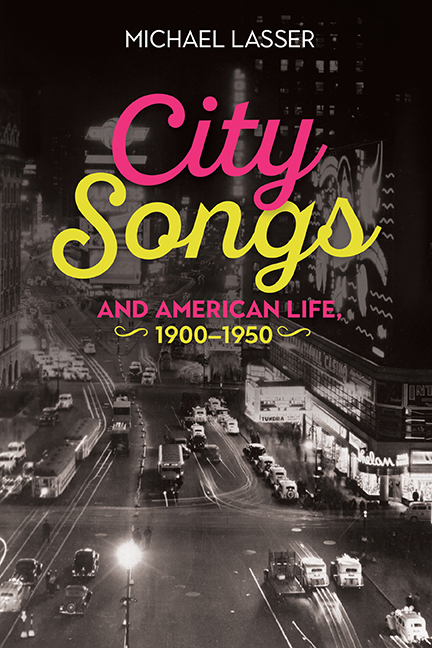Book contents
- Frontmatter
- Dedication
- Epigraph
- Contents
- Notes to the Reader
- Introduction: Encountering the City
- 1 The City's Clangor
- 2 Broadway's Melody
- 3 Harlem's Renaissance
- 4 Recordings, Radio, and Talkies
- 5 Starting the Century
- 6 The Flapper and the Jazz Age
- 7 The Great Depression
- 8 World War II
- Afterword
- Notes
- Bibliography
- Miscellaneous Endmatter
4 - Recordings, Radio, and Talkies
Published online by Cambridge University Press: 31 August 2019
- Frontmatter
- Dedication
- Epigraph
- Contents
- Notes to the Reader
- Introduction: Encountering the City
- 1 The City's Clangor
- 2 Broadway's Melody
- 3 Harlem's Renaissance
- 4 Recordings, Radio, and Talkies
- 5 Starting the Century
- 6 The Flapper and the Jazz Age
- 7 The Great Depression
- 8 World War II
- Afterword
- Notes
- Bibliography
- Miscellaneous Endmatter
Summary
I grew up with one foot in the world of radio and the other in the world of early television—of an age to listen to Lux Radio Theatre on my Arvin portable hidden under the blankets after bedtime and also to watch Milton Berle rehabilitate burlesque comedy on the Texaco Star Theatre. Before I started my homework on late winter afternoons, I pulled my chair close to the tiny screen of our first TV set to watch old Hoot Gibson westerns aired by a primitive station in Newark, New Jersey. Soon, on Saturday mornings, I would start listening to Martin Block's Make Believe Ballroom on WNEW in New York so I could write down which recordings had made that week's top ten. By the time I left for college, my musical tastes were formed and deepened by WNEW's disc jockeys: Block, Al “Jazzbo” Collins, Art Ford, and especially William B. Williams.
A decade and a half earlier, the lyricist and jazz writer Gene Lees “grew up, ear to the radio, on the sounds of the big bands of the 1930s.” Network radio, he wrote, “was an irresistible cultural force, presenting—live, not on records—music of immense cultural diversity, almost every kind of music that America produced, and making it popular”—from Duke Ellington to Arturo Toscanini. Dance bands performing live in hotel ballrooms or crammed into tiny studios were an essential part of early radio, but by the midthirties, the first disc jockeys were playing recordings by the bands and singers that defined the popular music of the day.
Lees listening to live music and I to recordings, but both of us shaped by the songs of the Great American Songbook made immediate and accessible through records and radio. I'm not writing a history of recorded sound, though; this isn't about physics or engineering, but rather about how recordings and the radio complemented America's rise as an urban country and culture and how those changes found expression in our music. I write about songs eventually but it's also about how they reached us and how we responded. Recordings first outsold sheet music, radio first became a national phenomenon, and the first talkies sang and danced as Americans watched, enraptured—all in the same decade, the 1920s.
- Type
- Chapter
- Information
- City Songs and American Life, 1900–1950 , pp. 93 - 119Publisher: Boydell & BrewerPrint publication year: 2019



